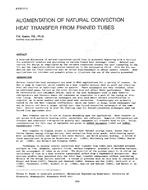Vacuum insulation panels (VIPs) at the exterior envelope have the potential to significantly reduce whole-building thermal energy consumption in retrofit applications. Case studies of VIP implementation exist; however, the current state of the art fails to properly optimize their use and integration into the exterior wall assembly and understand their impact on whole-building energy consumption over the lifetime of a building or retrofit solution.
This research project addresses current vacuum insulation limitations and utilizes whole-building energy analysis, optimization, and the development of construction techniques as a means for providing best practices for the implementation of lowcost VIPs. Using an innovative new core material composition developed within our research team and in tandem with a manufacturing partner, the research is developed in a way that is congruent with current construction methods but that is also disruptive to current practices for the design and construction of building envelopes.
To capture retrofit potential, an existing U.S. Department of Energy reference building was analyzed as an energy consumption baseline utilizing EnergyPlus within a parametric software platform. Models for whole-building energy and hygrothermal transfer will be developed to include thermal conductivity, thermal bridging, and moisture/airflow within the envelope assembly. Coupling energy models with a parametric platform will facilitate inclusion of manufacturing and construction processes within design as well as allow for the optimization of cost, panel size, assembly, and energy-efficiency variables. Appropriate envelope assemblies will emerge from this research, which incorporate VIPs as a novel, highly energy-efficient construction method for existing building envelopes.
The findings of the paper suggest that significant thermal energy savings can be achieved through VIP retrofitting. Yet limitation such as barrier film properties and pressurization affecting the fidelity of the vacuum itself as well as thermal bridging undermining the overall thermal resistance of the panel as a unit could potentially reduce the cost viability of the panel versus more conventional retrofit methods. Analysis and development are required in these areas in order to ensure that VIPs are cost-effective from a life-cycle perspective.
Citation: Thermal Performance of Exterior Envelopes of Whole Buildings XIII, Conference Papers
Product Details
- Published:
- 2016
- Number of Pages:
- 9
- Units of Measure:
- Dual
- File Size:
- 1 file , 2.3 MB
- Product Code(s):
- D-BldgConf16-36


